One of my favorite films of all time is Sean Penn’s “Into The Wild,” a true story based on the Jon Krakauer novel
(of the same name) about a young vagrant named Christopher McCandless. In the middle of his soul-searching journey, Christopher stopped at Salvation Mountain and Slab City, two famously eclectic landmarks in the Colorado Desert of California.
There, he met an intriguing and colorful cast of characters, from the creator of Salvation Mountain, Leonard Knight (who played himself), to the artists and wanderers who sought refuge in what’s frequently called “The Last Free Place on Earth.”
I’d almost forgotten about those scenes until I found myself close to the very locations where the movie was filmed, just a few miles from the Salton Sea near the nondescript town of Niland.
It was early September when we drove through the sun-baked section of desert that regularly reaches temps of 120°F in peak summer. That day, it was 111°F and the first time the thermostat in my car climbed into the triple digits all year.
Driving along Beal Road, which was as barren as they come, the first sight to emerge from the brown oasis was the technicolor art installation known as Salvation Mountain, a sort of gateway to Slab City. Because if you can’t handle the unbridled self-expression and artistic passion that is Salvation Mountain, you’re not ready for The Slabs.
Neither place is for the timid or the non-adventurous.
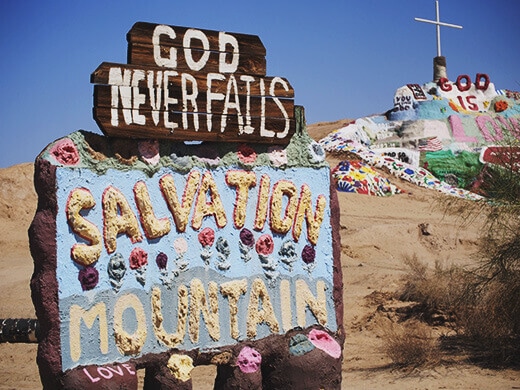
Salvation Mountain is a 50-foot-high and 150-foot-wide behemoth of an art piece, an homage to God and his gift to the world with a powerful message at the peak of the mountain: “God Is Love.”
The “mountain” is actually a sloping, undulating hill covered in straw, adobe, and thousands of gallons of acrylic paint, the creation of a drifter named Leonard Knight. A Vermont native, Leonard moved to that mound of dirt in the 1980s after his hot air balloon crashed into the site. Taking it as a sign from God, he decided to stay in the harsh desert year-round, make his home in an old converted truck at the base of the hill, and devote his life’s work to painting (and repainting) vibrant Biblical messages on the cracked earth. He lived at Salvation Mountain for nearly three decades, relying on the kindness and contributions of visitors for paint supplies.
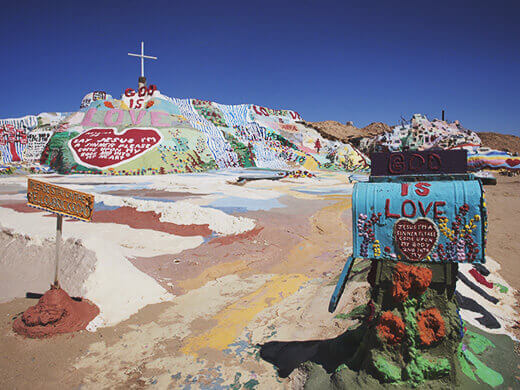
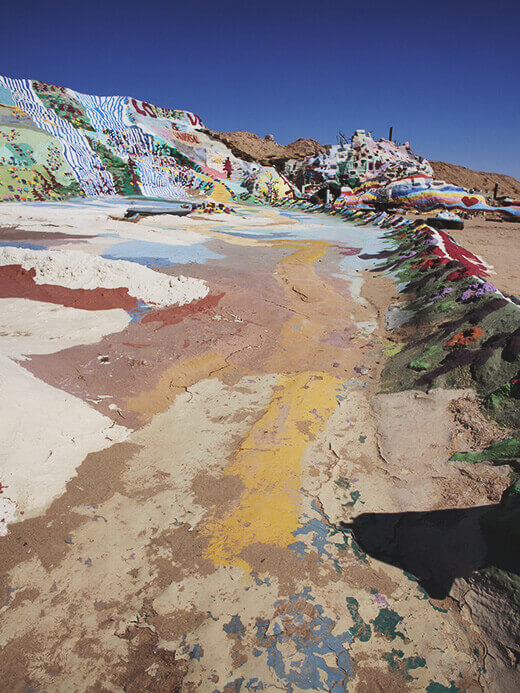
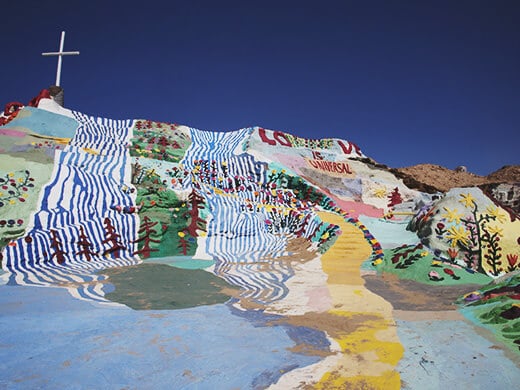
The shrine is clearly a beloved testament to Leonard’s religious salvation, but seems more inspired by Candy Land on an LSD trip. The surreal depictions include rainbows, waterfalls, flowers, doves, hearts, and a yellow path (dubbed the “yellow brick road”) that highlights a series of steps carved into the hill. Visitors to Salvation Mountain can climb their way to the top, as I did. (Oh, and did I mention it was 111°F that day?)
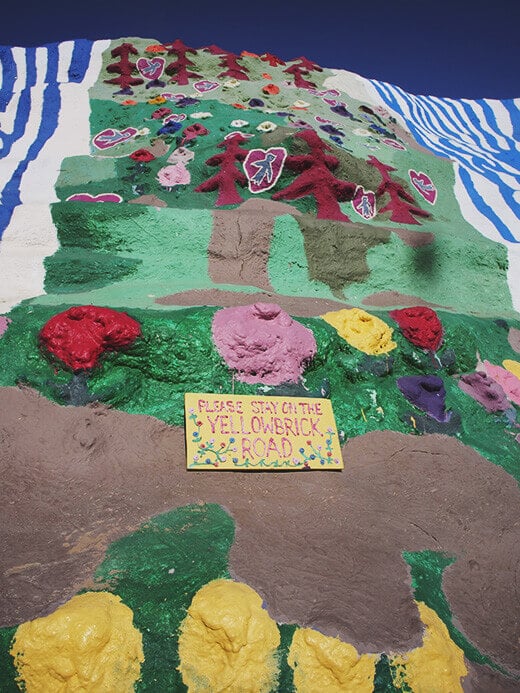
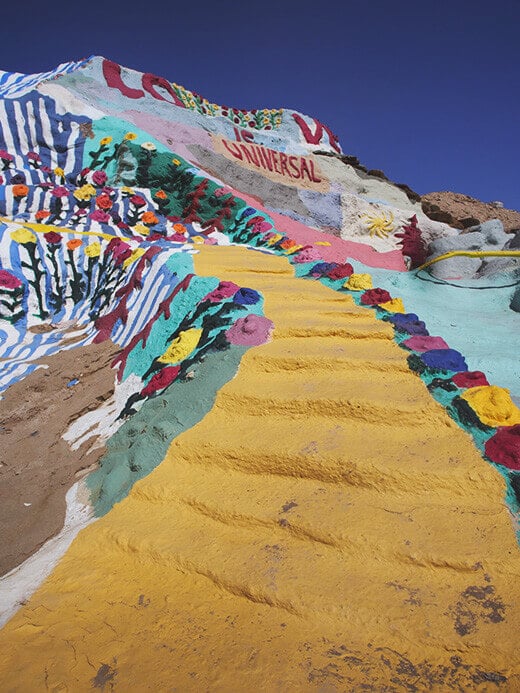
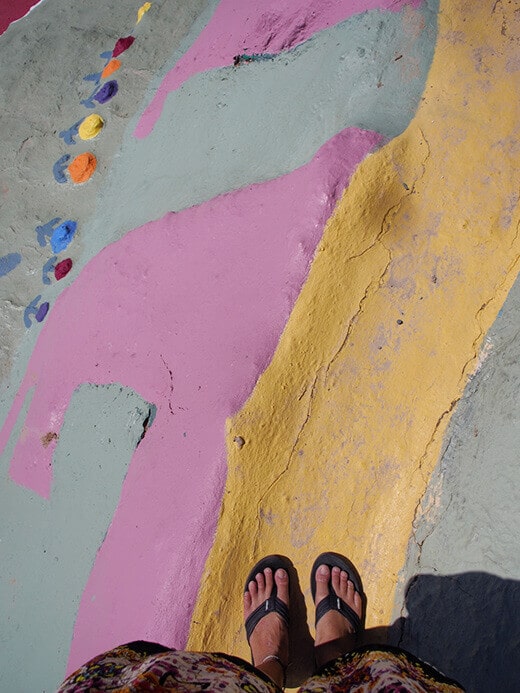
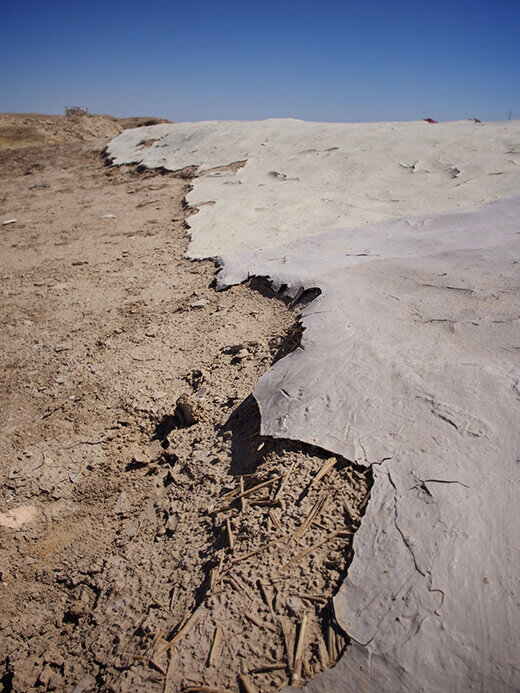
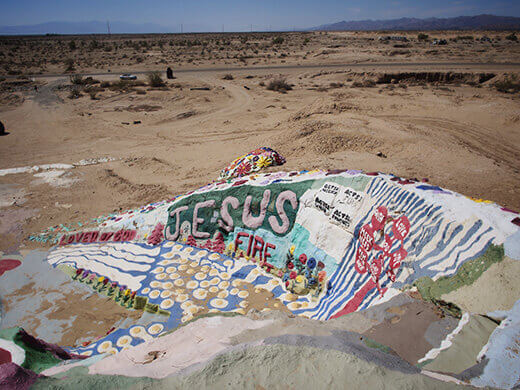
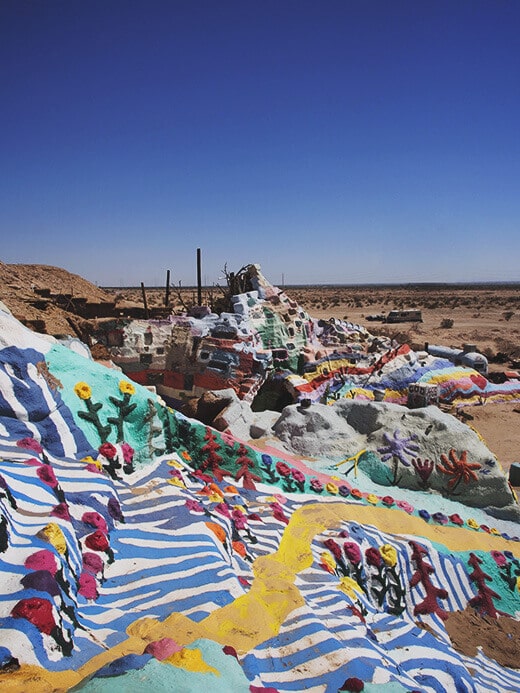
If you squint, you can actually see me under the cross, nearly three stories up.
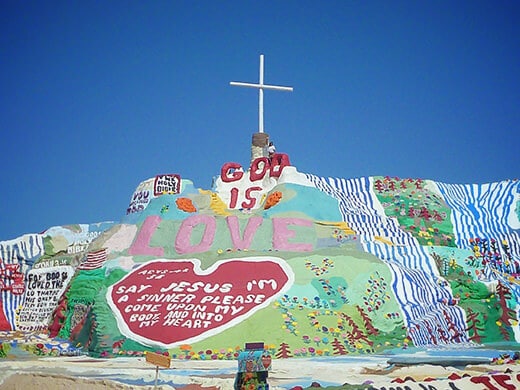
Leonard passed away in February 2014, but volunteers have since banded together to maintain and protect the mountain. When a decline in health prompted his move into a full-time care facility, a public-benefit nonprofit was formed to preserve his work.
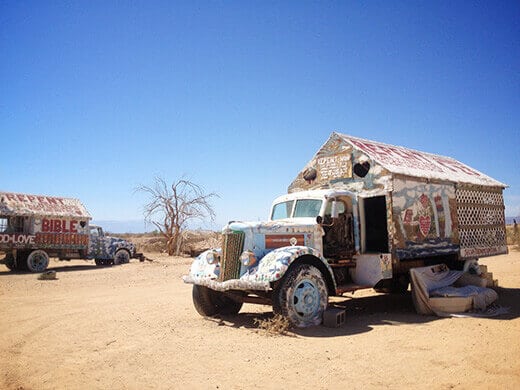
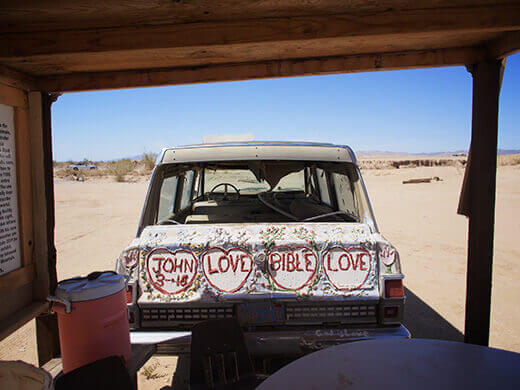
Salvation Mountain was deemed a National Folk Art Site in 2000 by the Folk Art Society of America.
In 2002, the mountain was named a national treasure in the Congressional Record of the United States. In her address, California Senator Barbara Boxer called Salvation Mountain “a singular sculpture wrought from the desert by a modest, single-minded man… profoundly strange and beautifully accessible, and worthy of the international acclaim it receives.”
I especially love this quote from his Los Angeles Times tribute: “If somebody gave me $100,000 a week to move somewhere and live in a mansion and be a big shot, I’d refuse it,” said Leonard. “I want to be right here. It’s amazing, isn’t it?”
Sheer passion right there, folks.
Just beyond Salvation Mountain, we continued across the arid flats until we reached the 640-acre compound of squatters, snowbirds, and gypsies known as Slab City.
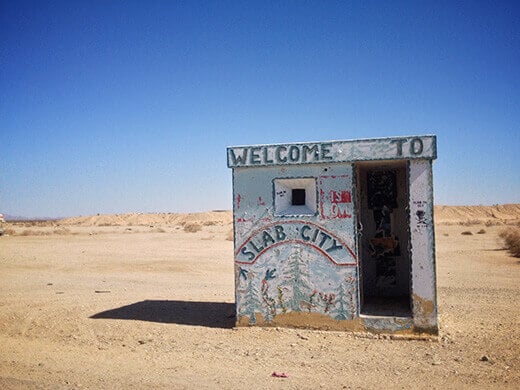
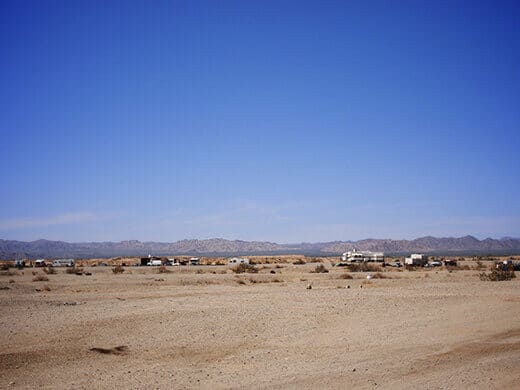
In September, there’s not much going on in The Slabs. Only a couple hundred diehards dwell in the stifling heat of summer, versus the thousands that arrive in the rent-free, do-it-yourself, off-grid encampment once temperatures drop.
Snowbirds from destinations as far flung as Canada pack up their RVs and their pensions and spend their winters in the warmth of the Southern California sun. Retirees and recession refugees set up shop (or trailers, trucks, or campers) next to meth-addled loners and Christopher McCandless-esque kids shunning the conventional life. They stay for a week or a season or even forever. They’re drawn to this life in the desert for many reasons; some stay by choice while others are kept there by circumstance.
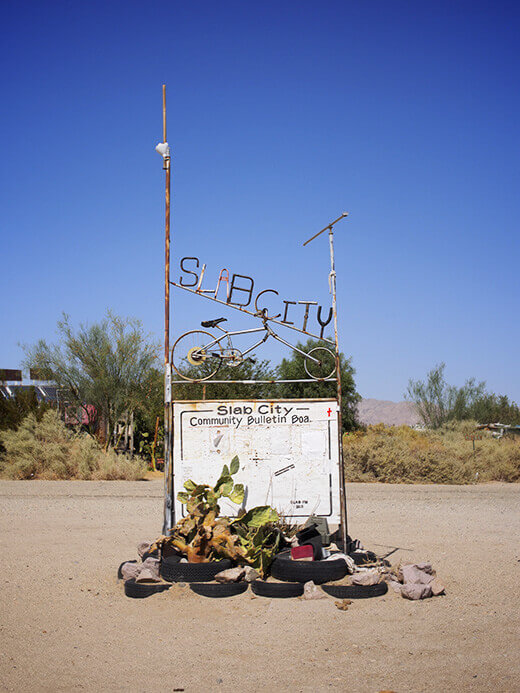

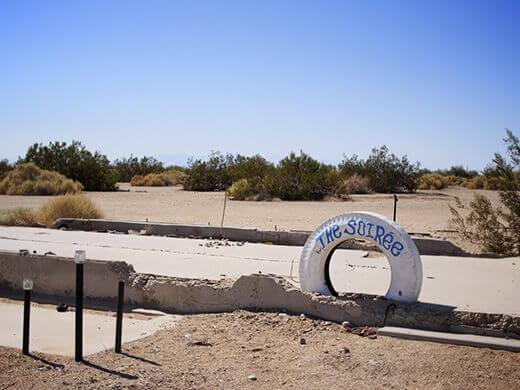
The Slabs are situated on an uncontrolled and decommissioned military training base called Camp Dunlap. The concrete slabs for which the settlement is named are remnants from World War II-era Marine barracks. Squatters started moving to The Slabs (now owned by the state of California) in the 1960s, and today it is both a popular snowbird destination and an experimental off-grid playground.
It’s not unusual to see converted school buses parked beside ramshackle single-wides parked beside souped-up RVs with $100,000 price tags. Some “neighborhoods” look like a Mad Max revival while others comprise row after row of modern-day campers — picture a semi-permanent Burning Man colony (in the early days) mixed with a hard dose of reality. The community is limited only by the imagination and resourcefulness of its residents.

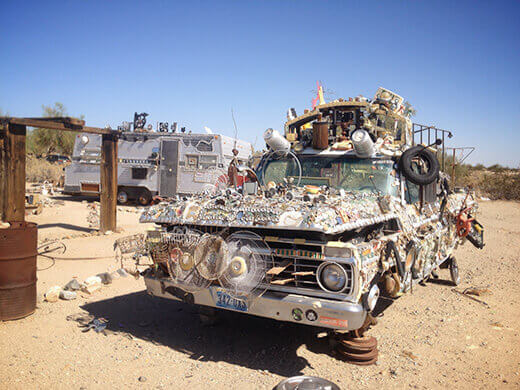
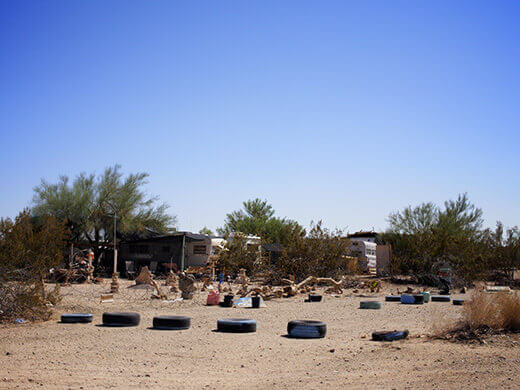
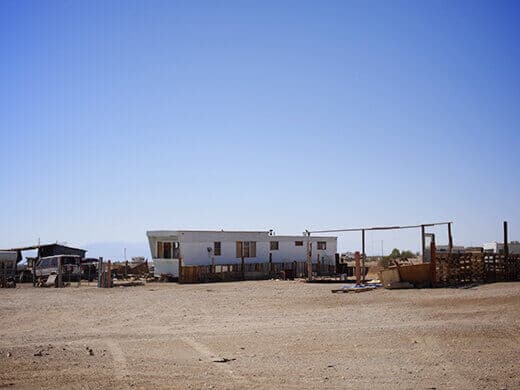
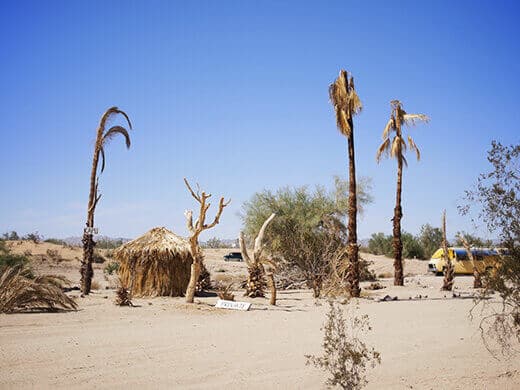
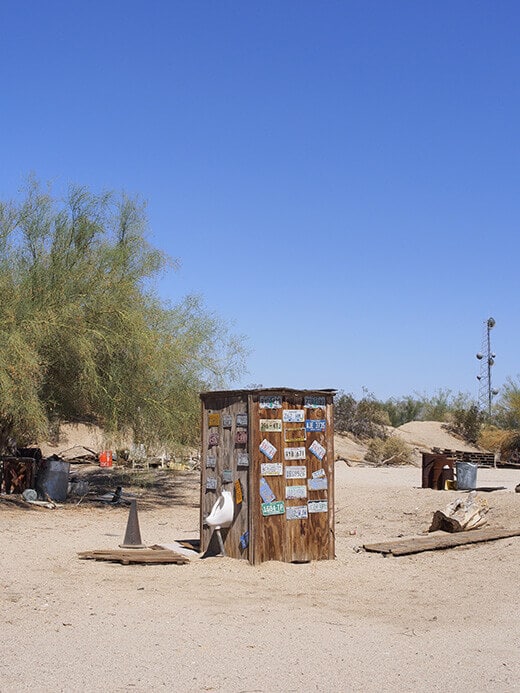
There is no water, electricity, trash, or sewage. In a way, it’s almost like the Old West. Slab City has its own economy ranging from neighbors bartering handyman work to locals offering meals on donation. There’s a library, a lounging area, a free Internet cafe run entirely on solar power, a late-night social spot called The Range (which hosts the annual “Slab City Prom” in spring), and plenty more businesses, permanent and pop-up, that I didn’t see in summer when most Slabbers have migrated to cooler climes.
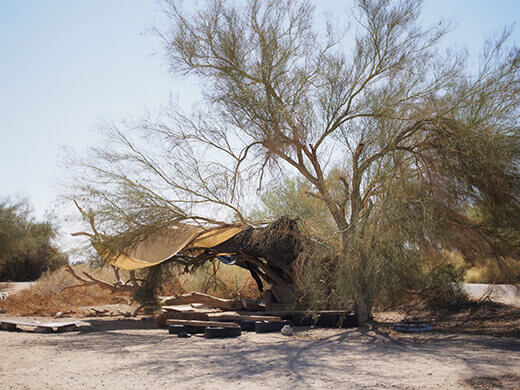
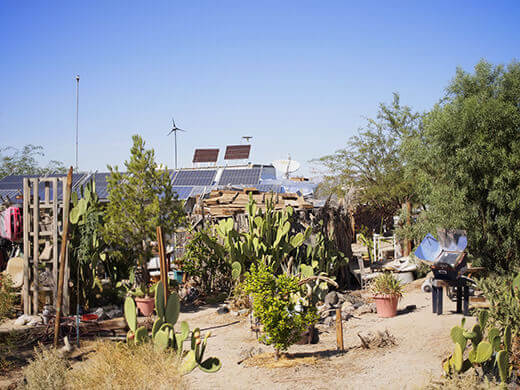
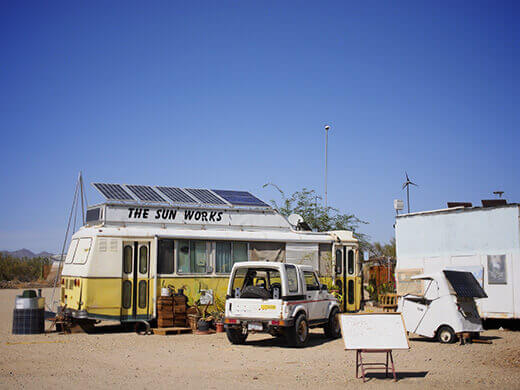
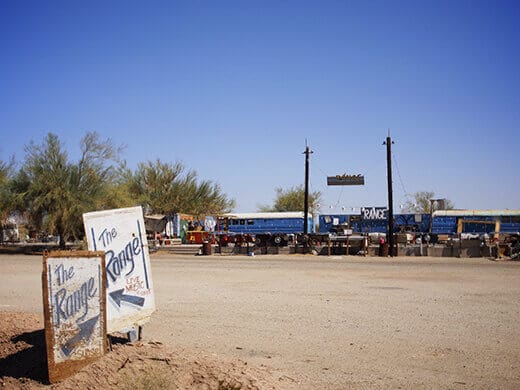
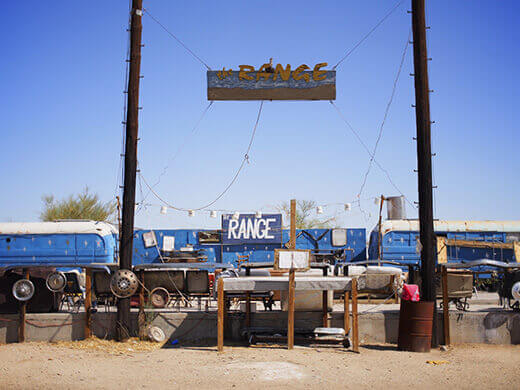
But come October, they start flocking to the desert in all manner of vehicles. And I’m thinking a return visit is in my future this winter.
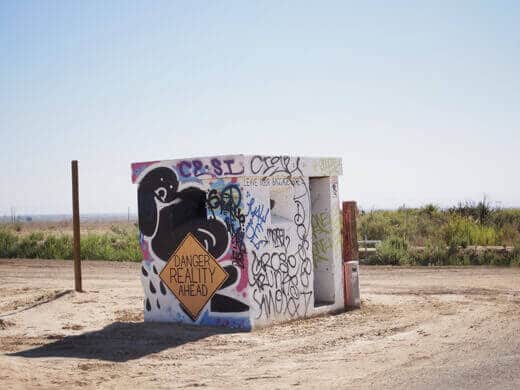


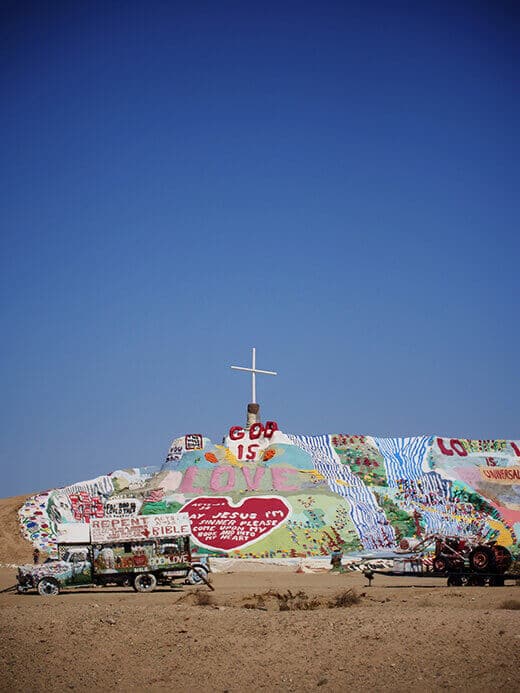













Surreal finds in the Colorado Desert. Finding God and Going Off-Grid: Salvation Mountain and Slab City http://t.co/NuhQr4emQA #california
Want to escape (or face) reality for a day? Go here. Finding God and Going Off-Grid: Salvation Mountain and Slab City http://t.co/Fg0FFRwbVV
In a parched corner of #California lie these oases. Finding God and Going Off-Grid: Salvation Mountain and Slab City http://t.co/CATJRsHr3S
Unusual places limited only by imagination. Finding God and Going Off-Grid: Salvation Mountain and Slab City http://t.co/VDcCI4LQ48 #travel
Betty, Love your words and pixs! “Salvation & Slab” was super! The part, “They’re drawn to this life in the desert for many reasons; some stay by choice while others are kept there by circumstance,” reminded me so much of my 17 years as JP over in Presidio, Tx, Big Bend area, in the northern, mountainous Chihuahuan Desert. Fond memories. The difference between the two–by choice vs. by circumstance–is huge. And of course the fodder for millions of whacky stories over the years. Glad you took this trip, woman!
Ohhh, I will have plenty more stories to come from this place! 🙂
Exploring #California way, way off the beaten path. Finding God and Going Off-Grid: Salvation Mountain and Slab City http://t.co/cZlCdZdQ1u
Fascinating! Please do return to Slab City when it’s high season and report back to us. I’ve always enjoyed learning about alternatives to “the norm”.
I’ve already recruited a few friends who have an RV. 🙂
You might meet a tough little 78 pound pistol of a gal on a mule. The half horse living kind of mule named Applejack. Tell her Marshall Smyth Says howdy. See if she falls off her mule!
Linda, might want to take several cases of gatorade to share with the folks you meet.
Haha!
I won’t be going back until winter when all the snowbirds have arrived. If the community’s like anything I imagine, there will be plenty of sharing and bartering among us. 🙂
RT @theGardenBetty: Blogged on Garden Betty: Finding God and Going Off-Grid: Salvation Mountain and Slab City http://t.co/dfSJDFNrk8
Blogged on Garden Betty: Finding God and Going Off-Grid: Salvation Mountain and Slab City http://t.co/dfSJDFNrk8